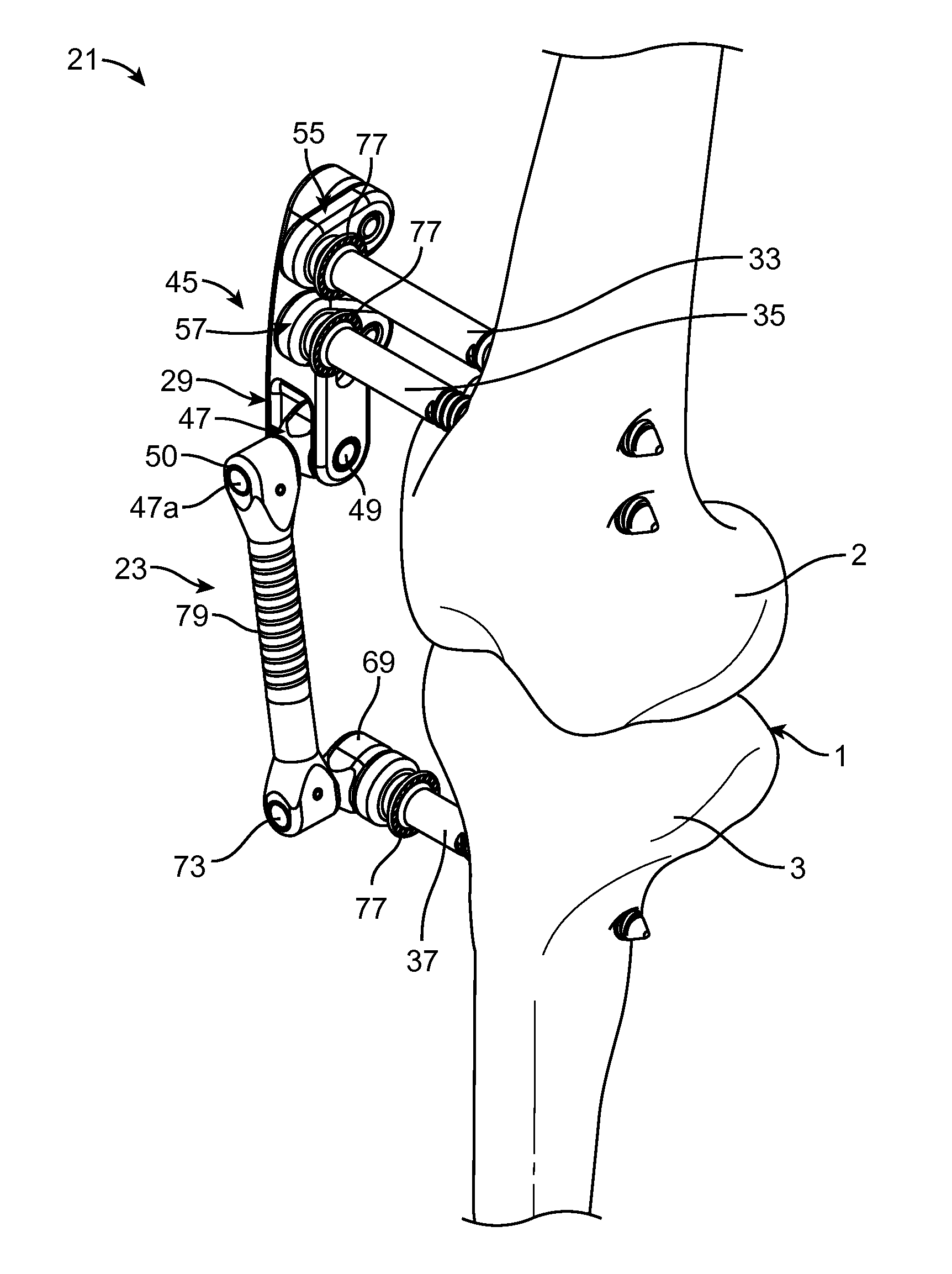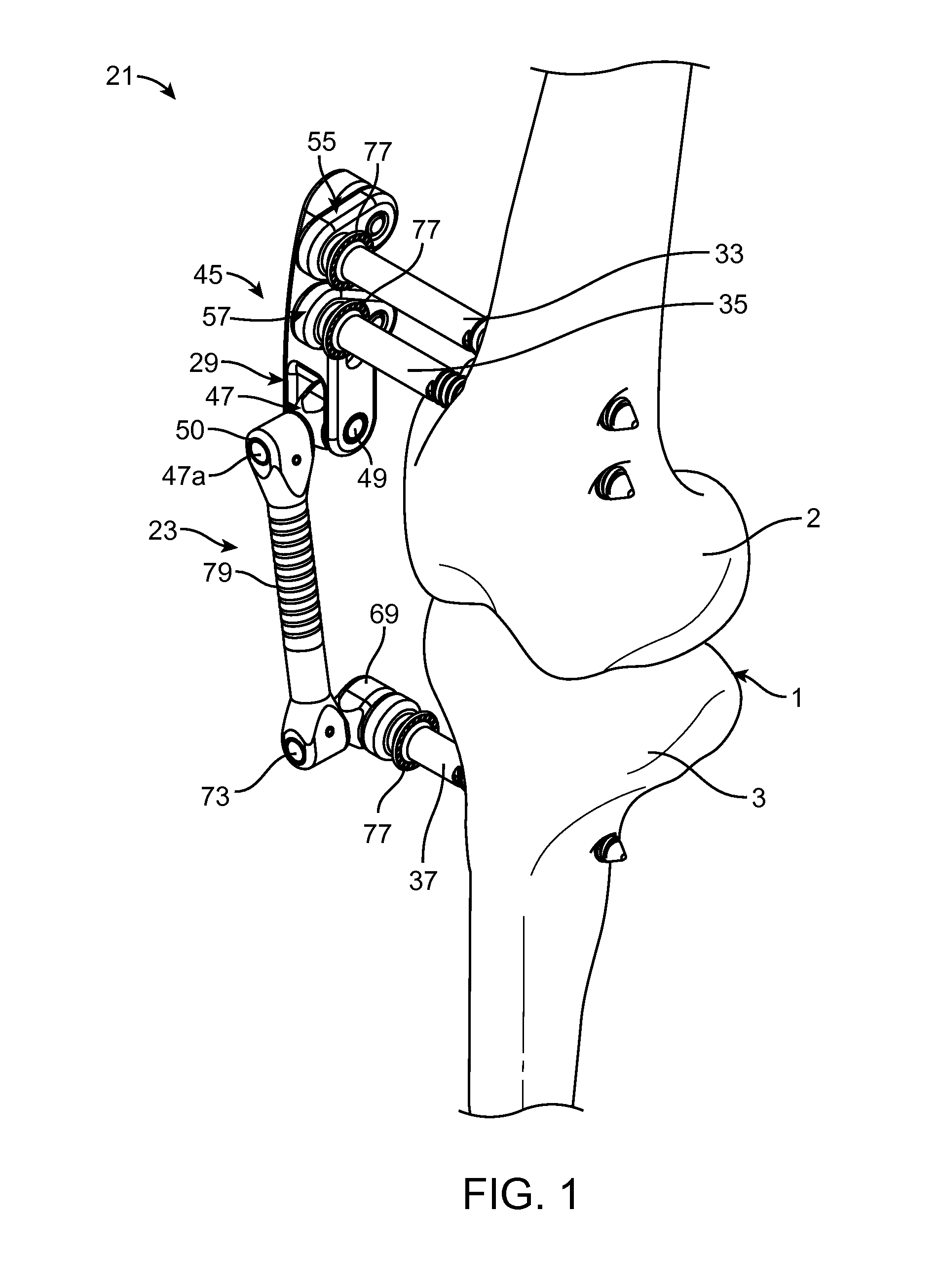Transcutaneous Joint Unloading Device and Method
a technology of unloading device and joint, which is applied in the field of joint unloading device, can solve the problems of requiring substantial recovery periods, requiring high recovery time, and arthroplasty procedures are also characterized by relatively long recovery times, and none of these currently available therapies are chondroprotective, so as to reduce pain and cushion the joint from excessive loading
- Summary
- Abstract
- Description
- Claims
- Application Information
AI Technical Summary
Benefits of technology
Problems solved by technology
Method used
Image
Examples
Embodiment Construction
[0032]Referring now to the drawings, which are provided by way of example and not limitation, the disclosed embodiments are directed to apparatus and methods for treating the knee joint. However, these embodiments may also be used in treating other body joints, and to alleviate pain associated with the function of diseased or misaligned members forming a body joint while preserving range of motion of the joint. The embodiments described below relate to apparatuses and methods for reducing the amount of load carried by the natural joint anatomy.
[0033]Certain of the embodiments include joint unloading devices designed to minimize the loading of the anatomy of the body, such as that found at a body joint. It has been postulated that to minimize pain, unloading or load absorption of 1-40% of the forces on the joint, in varying degrees, may be necessary. Variable unloading or energy absorption in the range of 5-20% can be a target for certain applications.
[0034]It has also been found tha...
PUM
 Login to View More
Login to View More Abstract
Description
Claims
Application Information
 Login to View More
Login to View More - R&D
- Intellectual Property
- Life Sciences
- Materials
- Tech Scout
- Unparalleled Data Quality
- Higher Quality Content
- 60% Fewer Hallucinations
Browse by: Latest US Patents, China's latest patents, Technical Efficacy Thesaurus, Application Domain, Technology Topic, Popular Technical Reports.
© 2025 PatSnap. All rights reserved.Legal|Privacy policy|Modern Slavery Act Transparency Statement|Sitemap|About US| Contact US: help@patsnap.com



